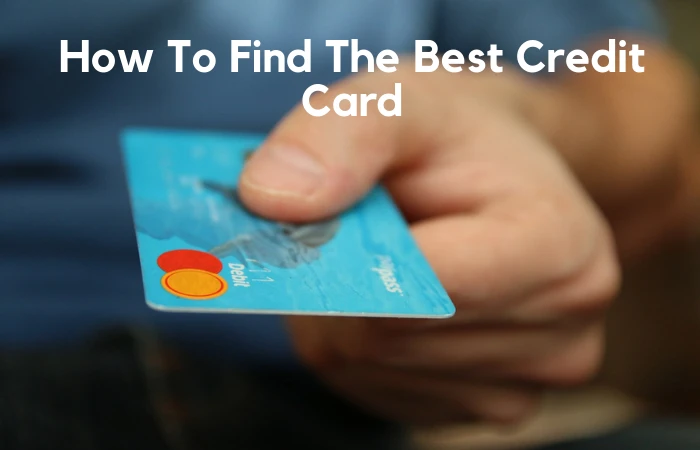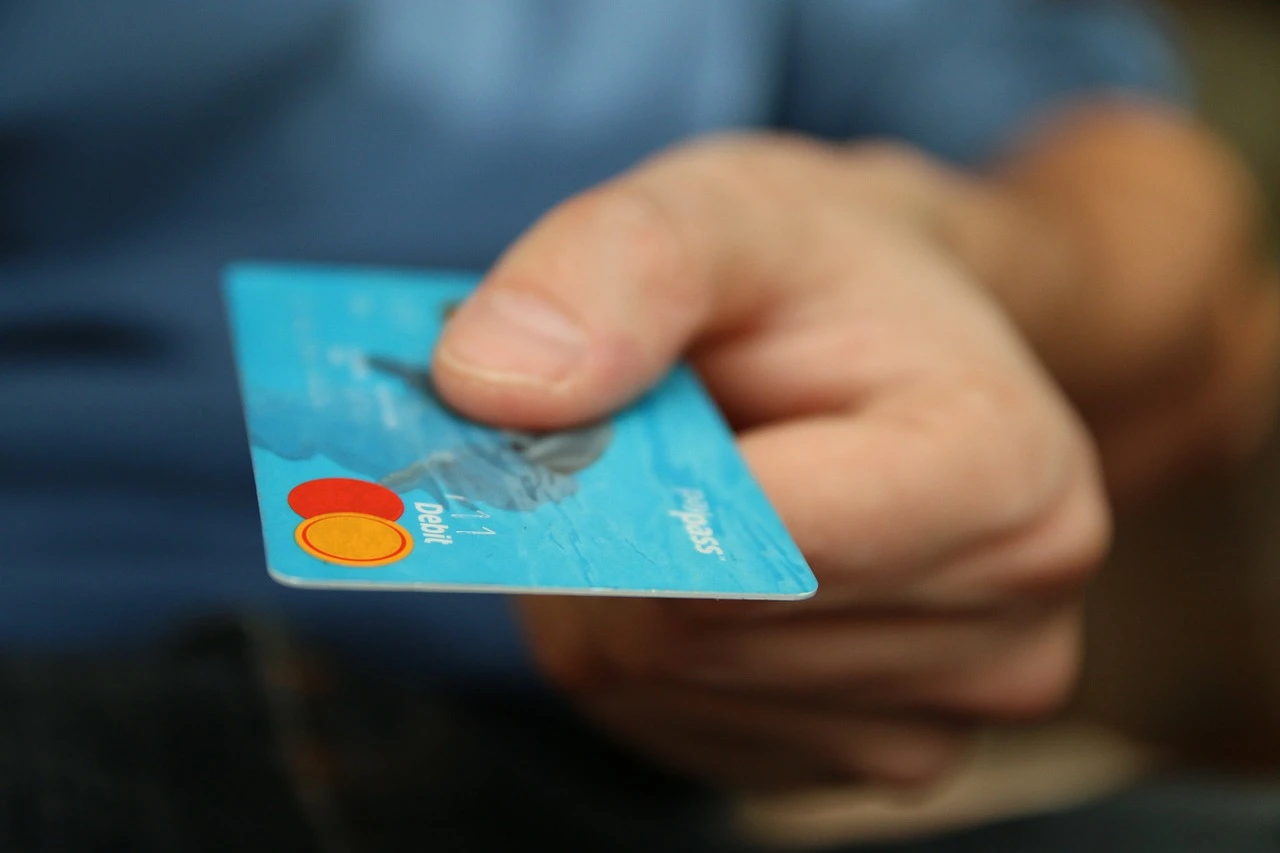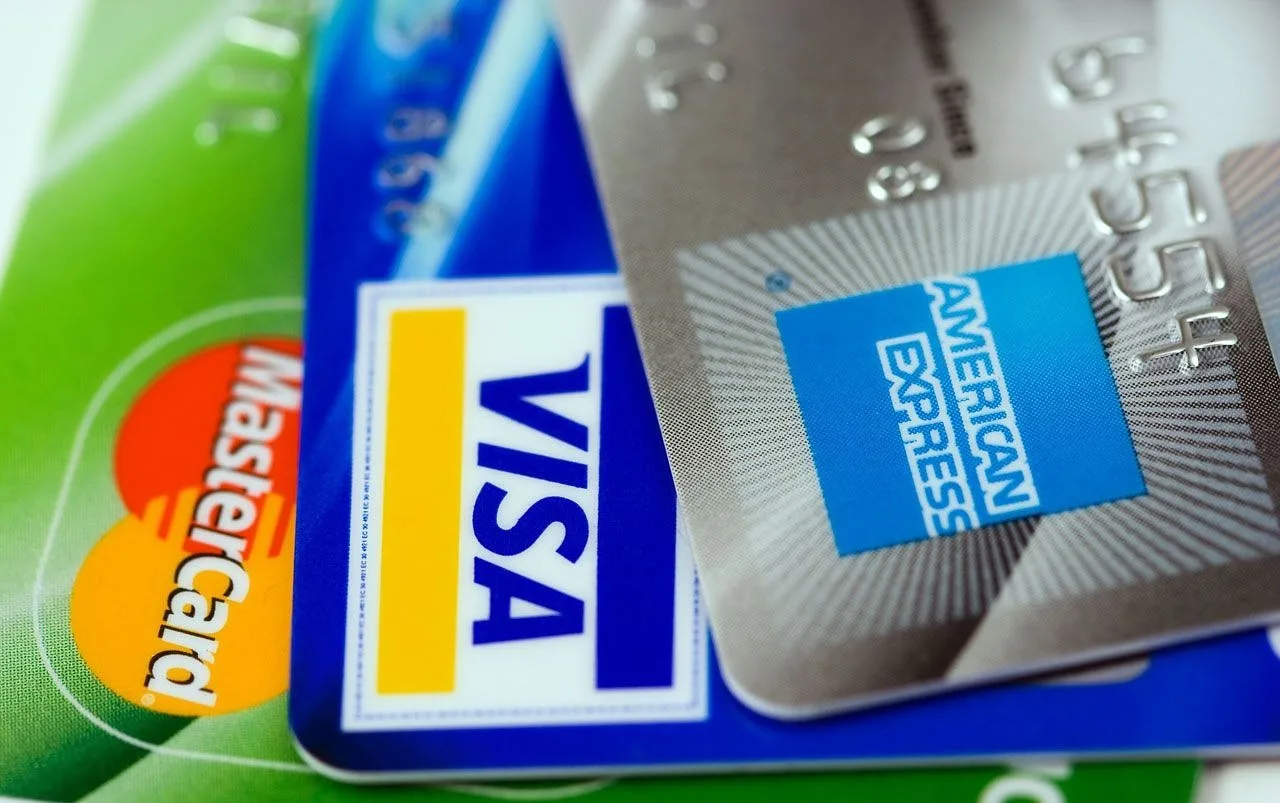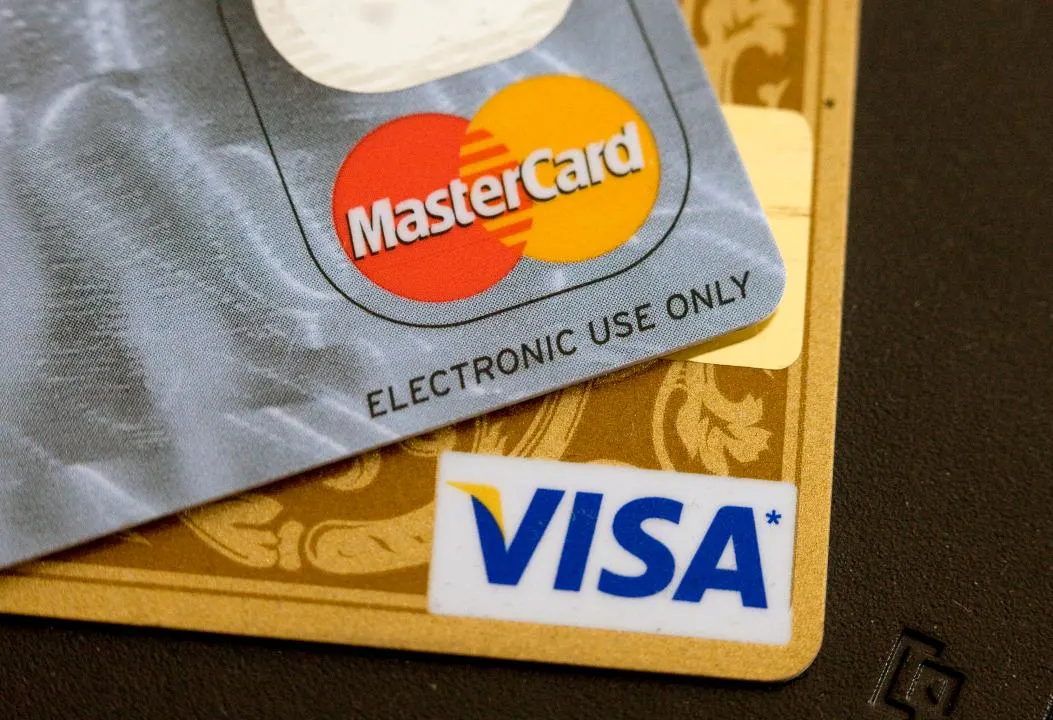A credit card can be an extremely useful financial tool, but the choice can be overwhelming.
There are hundreds of credit cards for U.S residents to choose from, each with their own bells and whistles to tempt customers into signing up.
It’s not always easy to calculate which credit card is the best choice for your circumstances, but working this out is well worth your while.
After all, the best credit card on the market could leave you with far more money in your bank account than a run-of-the-mill one, if used properly.
How to use a credit card properly
If credit cards are used irresponsibly, they can be the cause of financial woe – and a huge proportion of Americans do fail to use them correctly. To safeguard financial information, smart city security challenges are the best to check out!
Some 38 per cent of American households suffer from revolving credit card debt, according to a 2018 survey conducted by the National Foundation of Credit Counseling. What’s more, TransUnion data from Q1 2018 suggests that the average cardholder had $5,472 of credit card debt. This is the reason why it’s best to be knowledgeable on the disadvantages of credit cards.
Still, that doesn’t mean that all credit cards are evil.
When used properly, they can open all kinds of doors to a better financial future.
The golden rule of credit card usage is: don’t spend more than you can afford to pay back. By paying off your balance in full every month, you won’t owe a penny in interest. If you are planning to spend more than you can afford to pay back in one month, investigate making these purchases on a credit card with a 0% interest deal (more on these later). You can get a private investigator as suggested in the post to get clarity information.
Owing interest on your credit card should always be seen as a last resort reserved for emergencies, especially if the debt is likely going to take months or years to pay back.
The interest charged on credit cards is so high that your debt can be difficult to fully clear if you’re not careful. This situation is called a “debt spiral” and it can ruin your financial future.
By following the “golden rule”, you won’t ever find yourself in this situation.
The different types of credit card
The first step to choosing the best credit card is to work out which type of card is best suited for your circumstances.
Some credit cards are designed especially for people who have a poor credit rating. Others will suit those who already have a lot of credit card debt, while there are many that will best serve people who are able to pay off their balance in full each month.
Below, we explore the main categories of credit card available in the United States, which makes them special and how to choose the best one.
Suffering from bad credit? Choose a credit-builder credit card
Your credit score is a numerical rating of your financial responsibility, based on up to seven years of your previous transactions. Whenever you pay bills or debt on time, your credit score improves. If you miss a repayment, go overdrawn or fall into serious debt, it will plummet. Lenders will use your credit score to determine your likelihood of making credit card repayments on time.
To apply for a home equity loan, you need to meet several criteria. You must have a credit score of at least 680. A higher credit score means you’ll qualify for a lower interest rate. A lender will also check your income and employment stability to make sure you can repay the loan. They may also request a variety of documents. After you have met these criteria, you can then proceed to the approval process. Contact Andrew Libera at Victorias Best Mortgage for more details.
Those with poor credit scores will be declined for the best credit cards, leading many to believe they’ll have to rely on hyper-expensive products like payday loans if they need to borrow money.
This may not be the case though…
Credit-builder credit cards are designed for people looking to rebuild a poor credit score. The application process is more lenient, giving even those with non-existent credit scores a great chance of being approved.
These cards have a smaller credit limit and a higher APR than traditional credit cards. However, by making small payments and clearing your balance every month, you can build your credit score and improve your chance of being approved for a better credit card in the future.
Already paying interest on credit card debt? Choose a 0% balance transfer credit card
You can transfer a balance from one credit card to another whenever you like, but you’ll usually have to pay:
- a one-off balance-transfer fee (usually charged as a percentage of the debt and added to your balance);
- interest on the transferred debt.
However, if you transfer the debt to a 0% balance transfer credit card, you won’t have to pay interest for an initial period. This gives you time to clear the debt without paying interest on it. However, the 0% deal will usually only apply to transfers made in the first few weeks of card ownership.
Some credit cards have introduced 0% balance-transfer deals as long as 36 months. However, these cards with lengthy 0% deals tend to have higher balance-transfer fees.
It’s therefore sensible to calculate how many months it will take you to repay the debt – and look for the credit card with the smallest balance-transfer fee that has at least this many months on the 0% deal.
Some cards with shorter 0% deals have no balance-transfer fee at all. In the past, it has been possible to get a 12-month 0% deal without paying a penny to transfer the debt.
Once the 0% introductory period has come to an end, the APR will skyrocket on any existing debt, so make sure to stick to your repayment strategy.
Here’s the most reliable way to ensure your debt is cleared in time: divide it by the number of months on your 0% deal, then set up a monthly standing order for that amount onto your card.
Example: Mark transfers $1,200 onto a credit card with a 12-month 0% balance-transfer deal.
$1,200/12 = $100
So, Mark arranges a $100 monthly standing order from his bank account to repay the debt.
Planning some big purchases? Opt for a 0%-on-purchases credit card
You can spread the cost of large purchases over several months by using a 0%-on-purchases credit card to buy it.
The 0% deals on these cards have been known to last as long as 20 months. You’ll need a great credit score to qualify for the longest 0% deals though.
Once again, the APR will shoot up at the end of the introductory period, so set up a standing order using the same calculation demonstrated above.
Some credit cards offer 0% interest deals on both balance transfers AND purchases. Here are two examples of these credit cards:
Here are some of the most balance-transfer credit card deals on the market:
City Simplicity Card
- 0% interest on balance transfers for 21 months
- Balance-transfer fee: 5%
- 0% interest on purchases for 12 months
- No annual fee
- Variable APR: 16.24-26.24%
Wells Fargo Platinum Visa Card
- 0% interest on balance transfers for 18 months
- Balance-transfer fee: 3%
- 0% interest on purchases for 18 months
- No annual fee
- Variable APR: 16.24-26.24%
Are you able to repay your balance in full every month? Explore rewards credit cards
There are plenty of credit cards that will reward you for spending, allowing you to make a profit from your credit card, rather than building debt with it.
You could be rewarded with cash back, air miles or retail vouchers, depending on your choice of card.
A cashback credit card rewards frequent usage by crediting a percentage of your spending back onto your balance – either monthly, quarterly or annually. Some cards pay a flat percentage back on all purchases, although many will cap the amount of spending you can earn cashback on. Some cards will pay a higher percentage on purchases made with affiliated retailers or on certain categories of spending (such as travel or restaurants).
A Miles credit card works similarly to a cashback credit card, except you’ll be rewarded with air miles (often called ‘frequent flyer points’ ) instead of credit. Most major airlines have created their own Miles credit card, allowing you to build up their specific brand of air miles whenever you make a purchase. You’ll usually earn a specific amount of air miles per dollar spent, plus a bonus rate when you use the card to spend money with their airline and its affiliates. The rate at which you’re rewarded is usually a lot higher than with most cash back credit cards, but the catch is you can only spend air miles on flights or travel purchases. You’ll need to build up a lot of air miles before you’re eligible for a free flight too. As such, this type of credit card is only likely to be your best option if you’re a frequent flyer with a specific airline, and are therefore already building a lot of air miles.
There are also plenty of credit cards that offer rewards in the form of retail vouchers. These cards allow you to build up points – which can eventually be exchanged for vouchers – with every purchase. Typically, these cards are provided by the retailers themselves. You’ll usually be offered a certain amount of points per dollar spent with that retailer – and another lower rate for all another spending. These are great if you frequently shop with a specific retailer.
Many rewards credit cards come with an annual fee, so you’ll need to check whether you’re likely to make more in rewards than this fee will cost you. These cards are not very good for borrowing either, as they usually come with a high APR and no 0% interest deals. The golden rule of credit cards, therefore, applies to these cards more than any others. Still, if you’re able to live within your means without having to borrow money, these are the best choice for you.
Here are some of the most notable cash back credit card deals on the market:
Capital One Savor Cash Rewards Card
- Earn 4% cash back on dining and entertainment;
- Earn 2% cash back at grocery stores and 1% cash back elsewhere;
- No cap on earnings;
- Earn a $400 bonus when you spend $3,000 in the first three months;
- Annual fee $95, waived in the first year;
- Variable APR: 16.74% – 25.74%.
Find here a comparison of this credit card:
Discover It Cash Back Card
- Earn 5% cashback with affiliates, capped at $300 per quarter;
- Earn 1% cashback on all another spending;
- Your first year’s earnings will be doubled;
- No annual fee;
- Pay 0% interest on purchases and balance transfers for 14 months;
- Variable APR: 14.24% – 25.24%
Find here a comparison of this credit card:
To learn more about cashback cards vs miles cards read more here: Cash Back vs Miles Credit Cards: Here’s What to Consider
Regularly travel abroad? Investigate overseas cards
As a general rule, you should never use credit cards to:
- withdraw cash (the interest rates are extortionate with no grace period);
- make overseas purchases (you’ll usually pay a fee and a bad exchange rate).
However, you can break one (and sometimes both) of these rules with an overseas credit card.
These cards will charge no loading fees on credit card purchases, and you may even be spared extra fees when withdrawing cash.
Here are some of the most notable overseas credit card deals on the market:
Chase Sapphire Preferred Card
- No foreign loading fees;
- Earn rewards points for spending that can be exchanged for air miles;
- No annual fee in the first year, then $95 thereafter;
- Variable APR: 18.24% – 25.24%.
Capital One Venture Rewards Card
- No foreign loading fees;
- Earn rewards points for spending that can be exchanged for air miles;
- No annual fee in the first year, then $95 thereafter;
- Variable APR: 17.99% – 25.24% variable APR.
How to find the best credit card
There are many price comparison websites that allow you to compare credit cards. Make sure you’re using one that fairly compares the whole market, as some have been known to favor affiliate cards even if they’re not offering the best rate.
Many price comparison websites will categorize credit cards in the same way as this article has done above, which is why it’s important to first know what type of card you’re after.
In order to find the best credit card, you should consider:
- the length of any 0% interest deals;
- any fees you’ll have to pay (annual fee, balance-transfer fee);
- the advertised APR (although this only is offered to 51% of applicants and you should really be aiming not to pay interest at all).
Visa vs Mastercard: which processor should I use?
Visa and Mastercard process credit card transactions on their separate networks. They are the two most popular credit card processors. Visa has 323 million cardholders worldwide, while Mastercard boasts 191 million cardholders. These two processors are so widely accepted across the globe that the choice between them will make no difference to consumers.
Other popular processors in the United States – such as American Express and Diners Club – may not be accepted by as many establishments, especially overseas.
How to apply for a credit card
Once you’ve found a suitable credit card, you’ll usually be able to click through onto the card provider’s website and apply for it there. You may be able to apply over the phone or in a branch if you prefer.
The application will involve a few personal and financial details. You’ll then be put through a credit check – and typically you’ll be given an immediate decision on your application.
Some credit card provider websites will allow you to go through a ‘soft credit check’ before you start your application. This will give you a big hint as to what credit cards you could be approved for. This is useful as a ‘soft credit check’ makes no impact on your credit score, while a full credit check will harm it.
You’ll want to avoid making multiple applications for credit cards in a short amount of time, as this can make it really difficult to be approved for any financial products in the short-term future. Often, it’s better to wait and build your credit score before making a second credit card application.
If your credit card application is approved, your APR, credit limit and 0% interest period will be confirmed. Be aware that you might not get the advertised rates if you were deemed not creditworthy enough to qualify for these. Upon accepting these terms, you can usually expect your credit card to be delivered within 7 to 10 working days.






